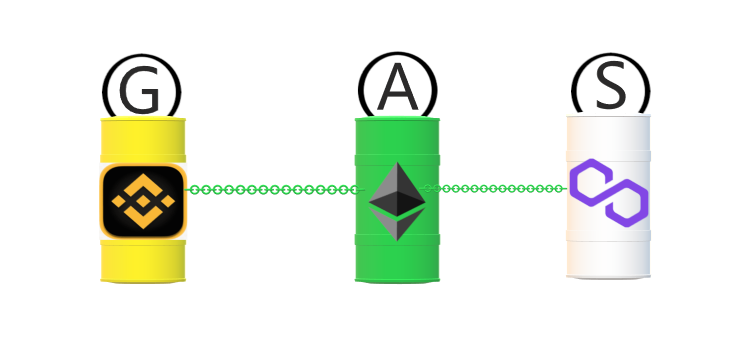In the world of blockchain and cryptocurrencies, certain terms might sound alien to those who aren’t well-versed in technology. One such term is “gas fee.” While it might initially seem complex, understanding gas fees is crucial for anyone looking to dip their toes into the world of blockchain transactions. In this article, we’ll break down the concept of gas fees in the simplest way possible, making it easy for non-techies to grasp.
What is the Blockchain Gas Fee?
Imagine you’re sending a letter via traditional mail. To get your letter delivered, you need to attach a postage stamp to it. The postage covers the cost of processing, transportation, and delivery of your letter. In the blockchain world, gas fees are similar to postage stamps; they are fees paid to facilitate transactions on the network.
Breaking Down the Analogy
Sending Transactions: In the blockchain realm, transactions involve sending data, which could be cryptocurrencies, smart contracts, or other information. Just like your letter, these transactions need to be processed and verified by the network.
Gas as Fuel: Think of gas as the fuel that powers the blockchain network. When you initiate a transaction, you include a certain amount of gas along with it. This gas is like your postage stamp, and it ensures that your transaction gets processed by the network’s miners (computers responsible for validating transactions).
Complexity Matters: Just as sending a larger or heavier package might require more postage, more complex transactions in the blockchain world demand higher gas fees. Complexity could involve executing intricate smart contracts or interacting with decentralized applications (dApps).
Miners’ Role: Miners are like postal workers. They verify and process transactions in exchange for the gas fees attached to those transactions. The higher the gas fee you offer, the more likely it is that your transaction will be prioritized and confirmed quickly.
Gas Price and Gas Limit: Gas fees are determined by two factors: the gas price and the gas limit. The gas price is like the cost of each postage stamp, while the gas limit is the maximum amount of gas you’re willing to pay for a transaction. Your total gas fee is the product of these two values.
Why Do Gas Fees Vary?
Network Demand: Just as postal services might experience high demand during holidays, blockchain networks can get congested. When many people want to use the network at once, gas fees increase because users are competing for limited processing resources.
Urgency: If you want your letter to arrive faster, you might opt for express mail with a higher postage fee. Similarly, urgent transactions on the blockchain require higher gas fees to ensure speedy processing.
How to Manage Gas Fees
Gas Fee Estimators: Various online tools and wallets provide estimations of current gas fees. These tools can help you gauge the appropriate gas price to set for your transaction.
Flexible Timing: If you’re not in a hurry, you can choose to send transactions during off-peak times when network congestion is lower. This might result in lower gas fees.
Gas Optimization: Developers continuously work on optimizing the blockchain to reduce gas consumption. As technology advances, gas prices might become more affordable.
Conclusion
In essence, gas fees in the blockchain world are the equivalent of postage fees in traditional mail. They ensure your transactions are processed promptly and efficiently. Just as understanding postage rates helps you navigate sending physical mail, grasping gas fees is essential for anyone engaging with blockchain transactions. Remember, gas fees might seem complex at first, but with a simple analogy and a bit of insight, you can confidently navigate the exciting world of blockchain technology.


















